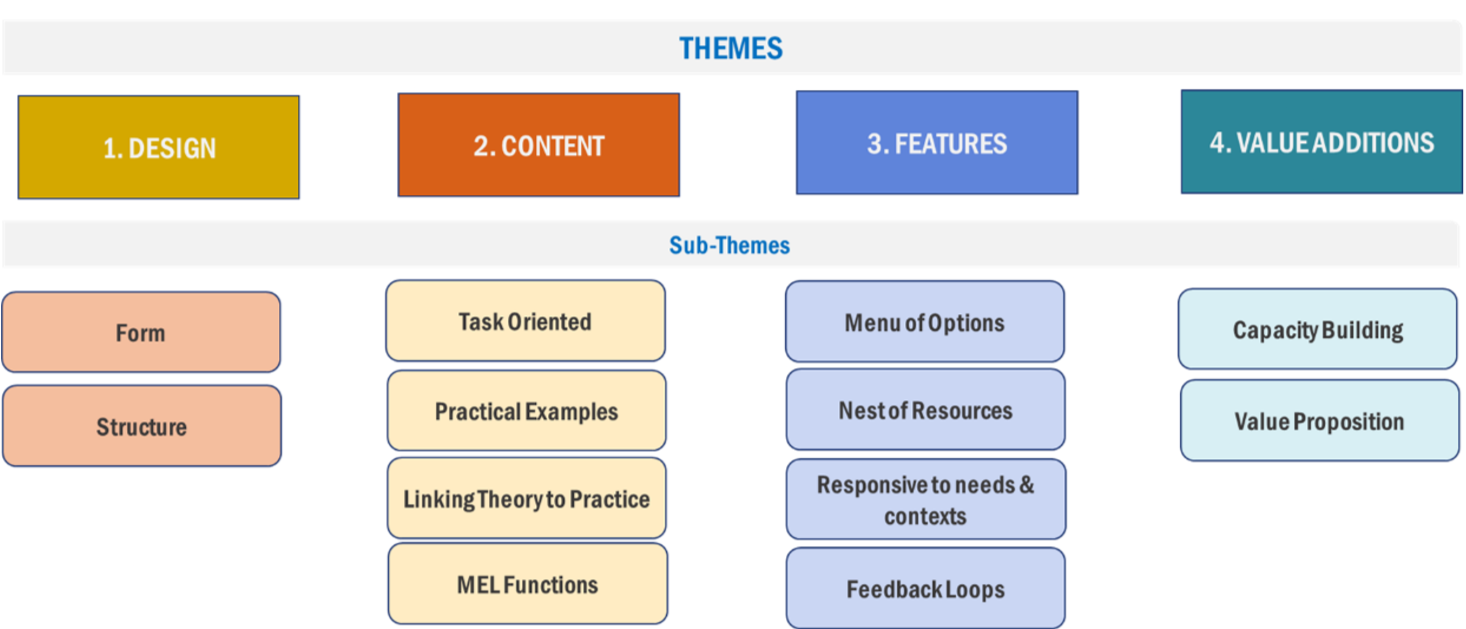Worked on the formative assessment for a Behavior Change Technical Resource Guide that led to the development of a global framework to strengthen Social and Behavior Change (SBC) programming for health
Led a Strategic Landscape Mapping to by conducting a PESTLE analyses across 17 countries, mapping global and regional commitments, donor activity, and current programming to identify strategic entry points for future SBC engagement.
Across multiple workstreams at Pathfinder International, I contributed to the design, development, and evaluation of global SBC guidance and tools to improve health program quality and consistency. Specifically, I:
Building Behavior Change Tools For Global Health
📚 Project Overview
Pathfinder International sought to develop a Global Social and Behavior Change (SBC) Technical Resource Package to help teams across the organization standardize approaches, improve technical quality, and access actionable tools and frameworks that provide guidance across the project lifecycle.
This participatory project included a qualitative needs assessment across six key Pathfinder teams, followed by validation and synthesis to shape the resources’ operational and technical features.
Behavior Change Technical Resource Guide
🧭 Study Design & Approach
Designed a qualitative cross-sectional study with:
Six focus groups (27 participants across technical and country teams)
One validation workshop
Used semi-structured guides focused on SBC integration across project lifecycle stages
Conducted thematic analysis in NVivo to generate strategic and operational recommendations
Synthesized findings into a framework organized by levels of use, function, and accessibility
🎯 My Role
Supported study design and participation selection
Developed a semi-structured guide focused on the project management lifecycle
Co-facilitated virtual focus groups with global teams
Led thematic coding and synthesis of qualitative data using NVivo
Generated clear recommendations and visual frameworks
Collaborated on resource formats, usability features, and capacity-building components
Helped design and incorporate feedback from the validation workshop
Developed a needs assessment technical report to synthesize findings and guide next steps
🧩 Key Outputs
SBC Technical Resource Package outline
Strategic and operational recommendations (format, implementation, and monitoring, evaluation, and learning support)
Framework for integrating SBC across project management lifecycle
Inputs for pilot tools including stakeholder checklists, job aids, and message development templates
📚 Project Overview
This project involved a comprehensive multi-country landscape analysis of Child, Early, and Forced Marriage (CEFM) to support strategic planning. The analysis explored global, regional, and national contexts across 17 high-priority countries through a PESTLE (Political, Economic, Social, Technological, Legal, and Environmental factors) analysis.
The brief examined:
Global and regional commitments to ending CEFM
Major donors, global/regional organizations, and consortiums involved in CEFM programming
Ongoing interventions and areas of active investment
Country-specific profiles, including key drivers, enabling policies, and data on prevalence
I synthesized the analysis and visualized data through regional maps, comparative tables, and matrixes that highlighted prevalence trends, stakeholder landscapes, and strategic entry points. The brief provided actionable insights and recommendations that assessed potential engagement, technical positioning, and SBC alignment.
Strategic Landscape Mapping
🎯 My Role
Led PESTLE analysis across 17 countries to assess political, economic, social, technological, legal, and environmental factors influencing CEFM
Gathered and synthesized evidence on CEFM prevalence, policy context, and behavioral drivers using national, regional, and global sources
Mapped international and regional commitments, analyzing each country’s alignment with key treaties and frameworks
Developed a comparative matrix showing country participation in global and regional conventions related to CEFM
Created a series of data visualizations to highlight CEFM prevalence, commitment status, and regional trends
Designed and authored a PESTLE matrix (across 17 countries), with a sample version included below for illustration
Developed a strategic technical brief outlining key insights and considerations for potential SBC engagement in CEFM
🧩 Key Outputs
CEFM Overview Brief (2022)
PESTLE Matrix covering 17 countries
Visual maps of regional commitments and prevalence
Donor and stakeholder ecosystem snapshot
Country-by-country comparative tables






